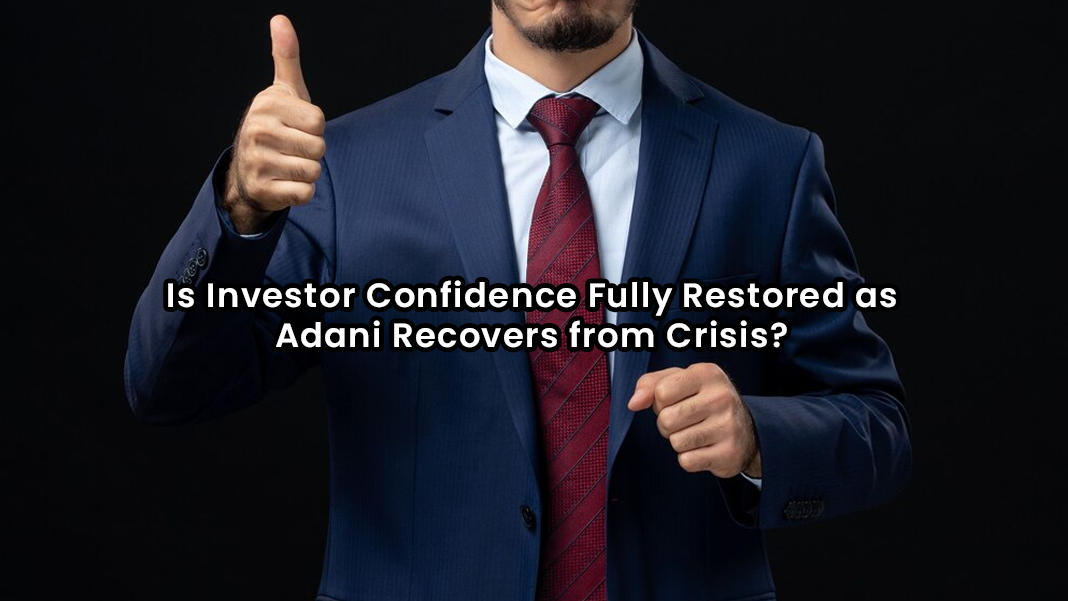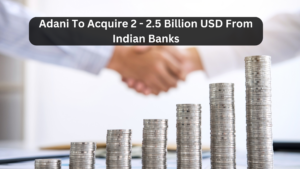
After a damning report by a US short seller shocked investors and destroyed billions of dollars from the conglomerate’s market value and its billionaire founder’s personal riches a year ago, it appears that Adani Group’s worst days are over. The firm has been able to push itself out of the Adani crisis and is progressing toward recovery.
In response to Hindenburg’s claims of financial misconduct, the Securities and Exchange Board of India (SEBI), the nation’s market regulator, launched an investigation. The Supreme Court of India decided that no additional investigation was required.
According to analysts, Chairman Gautam Adani’s circumstances have improved, and his company’s recovery will continue.
A Turning Point for Adani
Nilesh Tribhuvann, the Founder and Managing Partner of White & Brief Advocates & Solicitors, says, “This may signal a turning point, potentially marking the end of the worst phase of the crisis and positively impacting the Group’s standing and investor confidence.”
“By raising over $15 billion in debt and equity, the Adani Group has been proactive in its recovery, restoring investor confidence and re-establishing its bankability.”
How the Adani Group handles its debt, maintains investor confidence, and continues with business activities without significant delays will decide how the organisation gets out of the Adani crisis.
Since Hindenburg last January accused Mr. Adani and his conglomerate of financial crimes, including stock market manipulation and improper use of tax havens, the company, which has stakes in ports, airports, and energy, has been going through a difficult period.
The Adani Group has refuted every accusation, but at one time, the accusations caused its firms’ market values to drop by $150 billion. Tens of billions of dollars were also removed from Mr. Adani’s personal fortune.
Reclaiming Position as Asia’s Richest Man
The fact that Mr. Adani was able to temporarily reclaim his title as Asia’s richest man indicates the significance of the landmark ruling in India’s highest court.
On the Bloomberg Billionaires Index, his net worth increased by $7.7 billion in a single day to $97.6 billion, overtaking Mukesh Ambani of Reliance Industries. With his worth at $94.5 billion, Mr Adani has since fallen behind Mr Ambani. Mr. Ambani was worth $97.5 billion. The founder of Adani Group has nevertheless managed to raise his net worth by more over $10 billion so far this year.
Gautam Adani Relieved by Supreme Court’s Decision
In a tweet on the social media site X, formerly known as Twitter, Mr. Adani expressed his relief at the Supreme Court’s decision, stating that “truth had prevailed.”
He stated, “Our modest contribution to India’s growth story will continue.”
The revelation caused Adani’s stocks to spike higher, and analysts predicted the firms would keep regaining ground since they felt the Group was now better positioned to win back investors.
Following the ruling, Adani Enterprises saw a weekly gain of more than 5%. The biggest private port operator in India, Adani Ports, saw a gain of over 12%.
“We think that going forward, the group is in a stronger position,” states Manish Chowdhury, head of research at StoxBox broker.
India to Have Largest Cargo Ships
India will be known globally for having the largest cargo ships thanks to Adani’s planned megaport.
“The company has been at the forefront of effective communication with external shareholders, has initiated several effective initiatives, and has worked on the profitability front, reducing leverage and improving institutional outreach.”
Over the past year, Adani has been on a mission to win back investors’ faith. It has invited bankers to view its plants and held roadshows. Although the Group and Mr. Adani have been able to recoup the majority of their losses, they have not quite returned to their pre-Adani crisis levels.
Shortly before Hindenburg’s assessment was released, Mr. Adani’s wealth was valued at $118.9 billion on the Bloomberg Billionaires Index.
However, according to Bloomberg’s calculations, the conglomerate’s total market capitalisation is still roughly $50 billion below its pre-crisis levels. So, even while things are improving, risks still exist.
“The future is uncertain, but if the Group manages this crisis well, it could be a turning point,” says Hari Shankar Shyam, chairman of executive education at the Sharda School of Business Studies at Sharda University.
How the Adani organisation handles its debt, maintains investor confidence, and continues with business operations without significant delays are just a few of the factors that will determine how it emerges from the Adani crisis.
Significant Progress
In addressing the matter, the organisation has made significant progress thus far.
“The company has been aggressively adjusting its growth objectives, slowing down acquisitions, deleveraging, and fortifying its financial sheet while working on a recovery plan,” Mr. Shyam explains.
Despite the crisis, the Adani Group last year announced intentions to invest $100 billion in renewable energy, refinanced a $3.5 billion loan, and obtained funding from GQG Partners.
The Group has persisted in its efforts to diversify, growing into industries like artificial intelligence and media.
Adani Ports announced that it would offer debentures, a type of long-term commercial financing that is not backed by collateral, to raise up to $600 million. This is another encouraging move for the company.
Investigation Results to Impact Investor Confidence
Although there is still work to be done, Mr. Shyam notes that “some investors may choose to exercise caution” given the severity of Hindenburg’s charges.
Investors are still waiting for SEBI’s investigation into the Adani Group to be finished. According to the regulator, it will take the proper action based on its findings.
According to Niranjan Shastri, the chairman of the programme at the School of Business Management at NMIMS Indore, “once SEBI’s report comes out in the remaining cases and if it comes out clean,” this will help to rebuild investor trust in the Adani Group massively. He states there will be a continuous “cautious approach” to company valuation.
The Indian Supreme Court also established an expert panel last year to investigate potential regulatory violations; the panel found none and no solid proof that the organisation had manipulated stock prices.
After extending the deadline twice, the Supreme Court has granted the market regulator an additional three months to finish its inquiry. In August, the SEBI informed the court that it had concluded its investigation into 22 of the 24 Adani Group-related concerns it had looked at.
Mr. Tribhuvann states, “the lessons highlight the critical importance of good governance, due diligence for investors, realistic company valuations, and regulatory vigilance.”
“We acknowledge the Adani crisis as a chance for investors, regulators, and corporate India to improve due diligence, transparency, and strong regulatory frameworks for a more resilient market environment.”
Conclusion:
Resilience and recovery have been hallmarks of the Adani Group’s path since the Hindenburg report. While obstacles still exist, encouraging signs are everywhere. Strategic debt management, investor engagement initiatives, and the Supreme Court’s decision have all helped make up some of the lost ground. Future expansion is seen in the Group’s focus on renewable energy and diversification into new industries, including media and artificial intelligence. Adani is in a solid position to win back trust and weather this crisis as SEBI’s investigation draws to an end and openness continues to be a top goal. The entire story offers insightful lessons for corporations, regulators, and investors alike that will strengthen the Indian market.







